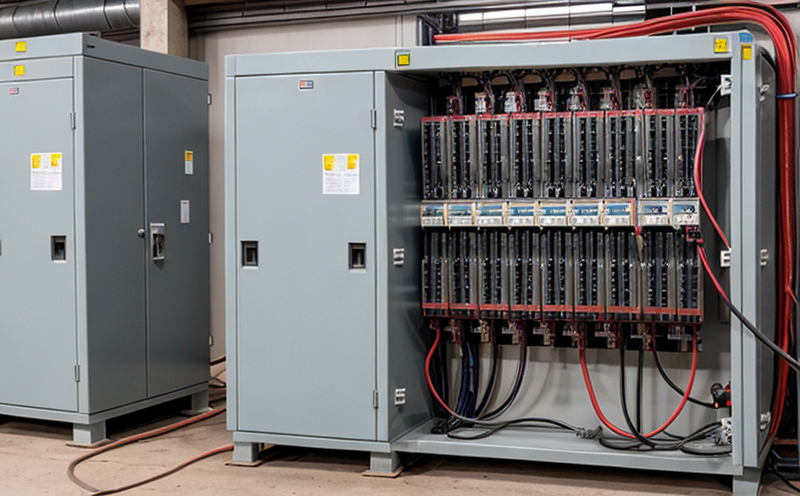IEEE C57.13 Instrument Transformer Testing
The IEEE C57.13 standard is a cornerstone in the testing and evaluation of instrument transformers used in power and utility systems. These devices are critical for accurate measurement, protection, and control within electrical networks. The IEEE C57.13 test ensures that these transformers meet stringent performance criteria to guarantee safe and reliable operation.
Instrument transformers (ITs) like current transformers (CTs) and potential transformers (PTs) are vital components of power systems. They help in converting high currents or voltages into lower values suitable for measurement, control, and relay protection purposes. The IEEE C57.13 test evaluates key parameters such as accuracy factors, rated secondary impedance, and phase angle error. This standard is applicable to both new and existing transformers.
The testing process involves several steps. Initially, the transformer is carefully prepared according to the specified guidelines in IEEE C57.13. This includes cleaning the transformer, ensuring it is free from dirt or contaminants that could affect its performance during testing. Once cleaned, the specimen is placed on a suitable test bench.
The testing procedure begins with applying voltage and current at rated values to simulate real-world conditions. The accuracy factors are then measured using calibrated instruments. This step ensures that the transformer provides accurate readings under standard operating conditions. Following this, the phase angle error is evaluated. This parameter is crucial for ensuring precise measurement of power factor in electrical systems.
The IEEE C57.13 test also includes checks on rated secondary impedance, which is essential for determining the load capability of the transformer. Additionally, temperature rise tests are conducted to ensure that the transformer can operate within safe limits even under heavy loads or high ambient temperatures.
Once all these parameters have been tested and measured, a detailed report is generated. This report provides comprehensive data on the performance of the instrument transformer during testing. It includes values for accuracy factors, phase angle error, rated secondary impedance, and temperature rise. The report also contains recommendations for any necessary adjustments or replacements to ensure optimal performance.
Compliance with IEEE C57.13 is not only a legal requirement but also essential for maintaining the reliability of power systems. Non-compliance can lead to inaccurate measurements, increased risk of equipment failure, and potential safety hazards. By adhering to this standard, utilities can ensure that their instrument transformers are capable of delivering accurate and reliable performance.
The importance of IEEE C57.13 testing cannot be overstated. It ensures that the equipment used in power systems meets the highest standards of accuracy and reliability. This is crucial for maintaining the integrity of electrical networks and ensuring safe operation. The results of these tests provide critical insights into the condition of the transformers, enabling proactive maintenance strategies to prevent potential failures.
In summary, IEEE C57.13 testing is vital for the proper functioning and longevity of instrument transformers in power systems. It ensures that these devices meet rigorous performance criteria set by international standards. By conducting thorough tests and generating accurate reports, laboratories can provide valuable insights into the condition of transformer equipment. This information is invaluable for quality managers, compliance officers, R&D engineers, and procurement teams who rely on reliable data to make informed decisions.
Why Choose This Test
The IEEE C57.13 test offers several advantages that make it an ideal choice for instrument transformer testing in power utilities:
- Enhanced Reliability: Ensures that transformers operate within safe limits and deliver accurate measurements.
- Compliance Assurance: Helps facilities meet regulatory requirements, reducing the risk of penalties or sanctions.
- Predictive Maintenance: Identifies potential issues before they lead to costly failures.
- Improved Safety: Reduces risks associated with inaccurate measurements and potential equipment failures.
By choosing IEEE C57.13 testing, power utilities can enhance the overall reliability of their electrical systems while ensuring compliance with international standards. This not only protects the infrastructure but also ensures safe and efficient operation.
Customer Impact and Satisfaction
The IEEE C57.13 test significantly impacts customer satisfaction by ensuring that instrument transformers operate reliably and accurately. This leads to improved service quality, reduced downtime, and increased efficiency in power systems. Customers can trust the results of these tests, knowing that they meet the highest international standards.
- Enhanced Service Quality: Reliable equipment ensures consistent and accurate measurements, leading to better service delivery.
- Reduced Downtime: Regular testing helps identify potential issues early, preventing costly outages.
- Increased Efficiency: By ensuring that transformers are in optimal condition, the overall efficiency of power systems is improved.
Customers who choose IEEE C57.13 testing can expect high levels of satisfaction due to the enhanced reliability and accuracy provided by the tested equipment. This ultimately leads to a safer and more efficient electrical network.
Competitive Advantage and Market Impact
Adhering to IEEE C57.13 testing provides utilities with significant competitive advantages in the market:
- Innovation Leadership: By staying compliant with international standards, utilities demonstrate their commitment to innovation and quality.
- Customer Trust: Ensuring accurate and reliable measurements builds trust among customers and stakeholders.
- Regulatory Compliance: Meeting regulatory requirements can open up new markets and opportunities for growth.
The impact of this testing extends beyond individual utilities, influencing the entire market. By setting a high standard for instrument transformer performance, IEEE C57.13 helps establish benchmarks that other industry players strive to meet. This contributes to a more robust and efficient power sector overall.





